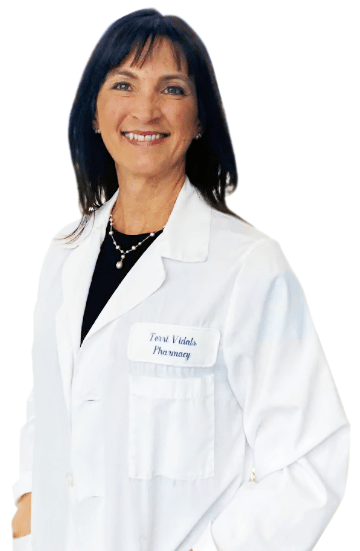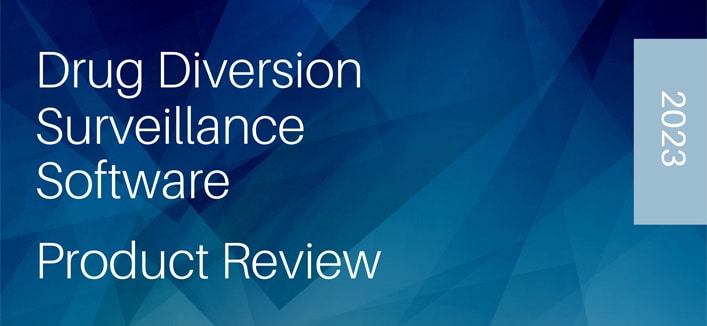From Manual to Automated with Liran Baron and Dana Davino LMHC, CASAC
Think about the tedious work you may do surrounding data collection. Conceivably you spend much time gathering it but you don’t have the time to devote to utilizing the data. Perhaps the manual gathering doesn’t take “that” long and what alternative do you have anyway, so you continue to gather. If you thought like a data scientist, you would likely take a different approach. Automate the process which will ultimately save time and operationalize the data into meaningful actions. Join me today as we hear how a data scientist and mental health counselor partnered to operationalize the data into something meaningful for patients and counselors.
Transcript:
Terri
Welcome back, everybody, to Diversion Insights. Today my guests are Leron Barron, who is a software developer and data scientist, and Dana Devino, who is a licensed mental health counselor credentialed in alcohol and substance abuse counseling. Today’s interview is a bit different, and it is meant to kind of stimulate some creativity on how technology can be used to make a difference in your practice or with patient care. Welcome Leron and Dana to the podcast.
Liran
Thank you.
Dana
Thank you.
Terri
Now, during our first conversation I had with Leron, he stated that many healthcare professionals don’t grasp how much manual work can be removed from their day to day workflow and optimized with technology. In optimizing, they can then use the data so much more effectively than they have been. Well, I’m one of those healthcare professionals. I just don’t think it so I thought it would be interesting to have this conversation and have them share with how Dana has taken advantage of the technology in her practice. So, Dana, give us a bit of the history and why you first reached out to Leron.
Dana
There is so much information available in our EHR that is difficult to extract and difficult to read. So one of the things that were important to us is to really understand our population, to know our demographics, to know who we’re treating, who’s active, and which disorders. So with that, we brainstorm basically what’s important to us to see. We want to know how our program is doing. We want to know how our counselors are doing. We want to know how our patients are showing up. We want to trend if they’re compliant with medication, which medications they’re on. So really we needed a place to see all of this information together and easily. So visually is probably one of the easiest ways that we can identify it, recognize it in snapshots. So that’s basically what we created.
Terri
Okay, can you give us a few examples of specific data that you are now gaining access to pretty quickly and how it has improved your practice or your patient experiences?
Dana
Sure. One of the most valuable tools that we created was a patient attendance chart that allows us to import our session information and then in a color coded chart, be able to see who is showing up and their attendance for the last several weeks. So we look at five weeks back, and it gives us a percentage on the average of their attendance over a five week period. It allows us to see the consistency or inconsistency and identify who is at risk of not attending, who is compliant, and where the people are in the middle. So it really gives us an opportunity to quickly identify where we need to focus our attention.
Terri
Quickly and accurately. I could just see me saying, “I feel like it’s been a while since I’ve seen so and so”.
Dana
Absolutely, and especially because we’re multiple providers someone may have been seen, but not by their primary care or not by their so as a supervisor, it allows the clinical supervisors to oversee what the counselors are doing. It allows the program directors to oversee the entire population. So that’s helpful. It also helps us as far as what diagnosis we’re working with. We can trend when we start to see more opioid use disorders versus more alcohol when more cocaine use disorders start coming in. So it really helps us to track what our clients uses are trending.
Terri
Okay, interesting. And I think when we had spoken before, you also talked about the diseases, the other diseases that they have as well. And so why is that important to be able to trend? What else is going on with their health?
Dana
Sure. So there’s the bi-directionality between either mental health disorders or medical diagnosis and how they impact each other. If someone’s in chronic pain, we know that puts them at a higher risk for opioids. We know that if somebody has higher anxiety, but we also know that there are other disorders that we need to be mindful of. So we do trend or we do track diabetes, hypertension, comorbid, anxiety, depression, schizophrenia, bipolar. So we’re looking at not only the substance use, we’re looking at the substance use disorders, the mental health disorders, and the medical disorders to really help our patients in a more holistic way.
Terri
Okay, that sounds great. And then as a supervisor for the practice, does any of that data assist you with your supervisory responsibilities or hiring or how can you use it that way?
Dana
In so many ways. In so many ways, we can track depression. We know how we need to train the staff. We know what programs we need to develop for our clients. We know how to hire. So if we’re looking at hiring, we can look at the production or the we call it direct client contact hours. So two interns come in at the same time, and we’re looking at who is more engaging with patients, whose patients stay longer in treatment. These are all metrics that we can track. And when we’re looking to hire someone, it’s not about who do you like better, it’s about who’s more engaging with our clients. Who do our clients like better? That really helps us on a program level.
Terri
Okay. Wow. That’s a lot of data that I don’t know that I ever would have thought about optimizing automating and getting right. I don’t know. I don’t think that way. So I guess I’m one of those people, Lauren, that has that I don’t know if it’s a mental barrier or I don’t think that way. So what kind besides not thinking that way, are there other reasons? Leron do you think that healthcare clinicians are resistant to this? Don’t reach out for automation. What are your thoughts on that based on your experiences?
Liran
I think that there is a challenging relationship between It and healthcare providers, generally speaking, for many reasons. I think the key is to have a relationship similar to the one that Dana and I have, where she knows the patients, I know the system, and what to do with the data to give her the answers that she’s looking for. And I think understanding starting points is typically hard. So then kind of framing the entire thing in terms of it, I would say isn’t the best approach. I would say the best approach is to think about what type of information do you need in order to do your job? So in your typical outpatient type of operation, you need to know how many patients did we see? You need to know what’s our retention rates, how long do they stay here on average? And there’s some key metrics right, that you need to know.
Liran
And in fact, when we started this entire project started when Dana initially showed me the report that they were running and how it was taking some poor person all weekend to generate this. And I said, well, we could do this in a few minutes with some automation. And so we did that. And what ends up happening is Dana looks at this stuff and she’s like, well, what about this and this? So we really just think about it in terms of question, right? Like, as a data scientist, I can sit there and look at pretty charts and graphs all day long and that’s all well and good, but as a clinician, you have a job to do and you have a lot of decision points. And it’s very helpful to incorporate data and patterns as part of your decision making process. So I would say to frame the entire thing in terms of what information, what questions do you have, what are your starting questions?
Liran
And in four years, we haven’t yet run short of like, no, I have all the information I need, we’re good, we’re done here. That just has not happened.
Terri
Wow. Yeah, you got the automation, itch Dana now. You just keep going. And I’m sure that does it’s. Like, oh wait, what else can we do? And I think you’re right, Lauren. In hospitals, the It department is going in multiple directions. Or they may have specialists in different departments that aren’t necessarily the person that can get it done for you, or you just have that red tape because there’s more going on. But having a data scientist that is maybe devoted to your department might be a really great thing. I know that I have reached out to them in previous places to run some data. We had an initiative at a hospital that I worked at to be more judicious with the opioid prescribing, but I needed to see how did it change? And they wrote a little bit of a report for me, but I still had to kind of, sort and put some pieces together.
It didn’t just jump out at me, but it was easier than going through every patient chart and figuring out what the changes have been. So I think that it’s maybe a matter of resources at a lot of facilities and so you don’t ask because it is going to take a while to get something. So I think that’s great that you two kind of found each other and Leron obviously seems to be good at what he does and then that conversation and as you talk more, you realize, hey, wait, there’s something else I can do with that. After you start to learn more and more about what it is that you each can do. So I think that’s fantastic that you brainstorm and do those types of things. If somebody has some ideas and wants to do something, and I’m talking probably more of outside of a hospital facility, but in a practice, what do you recommend?
Terri
What what are the first steps that you would see that they should go through and what are some important things to remember and consider when thinking about developing some automation for their data?
Liran
So I think it’s helpful to break down insights into different categories. So in our work we have the executive type of insights. So what is the health of our operation in the past year? How did COVID affect our numbers? So that’s like the executive function. Then you have your patient demographic function. So again, I’ll use the pandemic as the example. What was the impact of the pandemic in terms of opiate use disorder? The numbers change at all. So that’s one aspect of it. And then the other aspect is your counselors, right? Like what are they doing, who’s effective? What happened? This person’s patients used to be at 80% attendance rate. Now they’re down to 40%. What’s going on? Right? So start thinking in terms of those three separate buckets and there’s probably others as well. And then more than likely, you are looking at some forms of data today, whether it’s the number of patients you’ve seen because all these things ultimately tie to revenue. And without that you’re not going to be in business for too long. So you have to keep an eye on that. And somebody has to keep an eye on that in some capacity.
So I’d say take your existing report and then give it to someone and say, can you automate this for me? And the question that they should ask you in some way at some point is, can you show me the raw data? Because I need to look at the raw data to tell you if I can get you what it is you’re asking for. The other really important consideration in our space, the healthcare space, is HIPAA compliance. When we started this project, we anonymized all of our data. And so that allowed us to get around all of the HIPAA compliance, right? But at some point especially when Dana started using this attendance chart. It wasn’t an awesome experience to look at a deidentified code, look it up at the table, and then to figure out who needs help, who needs extra attention.
Terri
Right.
Liran
We made the decision right, to go HIPAA-compliance. But once you start storing patient information somewhere in the cloud or wherever that patient information lives, there’s a lot of really serious regulation that comes around making sure that data is secure.
Terri
Yeah, no, that makes sense. And I suspect that the more you start to gather, the more you probably realize how you can use the data and you didn’t think about it. Right. And so I think all of this thought process comes very naturally for those in the data science world. Well, of course you need the data. Data drives everything. Data drives grants, data drives, hiring approvals, makes decisions in the future, and which way a company is going to go for those of us that are less data driven. Right. It’s kind of by feel, well, I can tell we’re spending a lot of time on this, or I can tell this is a problem. So we need to put more resources here. But leadership wants some numbers. How much is it impacting us? And so prove to me that the resources need to go here. So that’s another thing, and I’m just thinking about in the healthcare world, with those that are monitoring for diversion, how long does it take to find somebody?
Or how much time are you spending on practice issues or automated dispensing machine discrepancy resolutions? Because maybe the staff on the floors are not resolving or they’re resolving incorrectly. And so what are you doing there? So those are just some numbers. Or when it comes to interviewing for suspected diversion, what are your questions? And is there any pattern to those that end up confessing that you could maybe use to highlight things or to drive your questions or your approach? So those are just some things that I can think off the top of my head that we would all like that data and we may have access to it to a certain extent, but there might be more that could be automated. So if you’ve got a good data scientist at your facility, or, you know, one named Leron Baron, perhaps, then there’s a lot of things that you can do. So I think that’s great. Is there anything else that you guys would like to share in terms of how this is impacted or what you would encourage others to do or to think about?
Liran
I would just say data is the means to the end. Right. Data is how we get to where you want to go. And you mentioned a bunch of different use cases, hiring grants. You have questions that you need answers to. That is just how we get to it. Don’t worry too much about the data, as long as it exists, a good partner will be able to tell you, hey, if you want to see this information, are you capturing this today in your EMR? Oh, you’re not? Okay. You need to start capturing this in this way in the EMR, and then two weeks later, we can then take that data and give you exactly what it is that you need. So I would say to keep the focus on the insights and questions that you have, and don’t worry too much about the data, because otherwise it becomes this big, scary proposition that you’re not all that familiar with, and so therefore, I’m just not going to work with it. Instead, focus on the questions.
Terri
Yeah, that makes perfect sense. So if you ever find yourself thinking, I wish there was a faster way to do this, or I wish I could grab this information on a larger scale, just stop right there. Don’t overwhelm yourself with thinking, well, how can I do this? Just know that it can be done if the data can be gathered, and then reach out and work with somebody to get it done, I think that’s probably the bottom line. Right.
Liran
It’s also been super helpful in the past where Dana has, like, proof of concepts of what it is she’s looking for, and she’s presenting those to me, and that gives me a really good idea of what our end result needs to be. And now I can start applying the engineering process and start working backwards to figure out, okay, well, how do we get there?
Dana
Yeah, except that it takes about two days to get the proof of concept, and it takes about 5 seconds once it’s done.
Terri
Yeah, well, it’s a good partnership between the scientist and the engineer, right. We have different skill sets, but together we can really come up with something amazing if we put our heads together. Okay, great. I want to thank you both for your time, and I’ve enjoyed it. It’s opened my mind up a little bit, because, as I said, I don’t think this way, so it’s challenged me to open up a little bit.
Liran
Just quick closing thought for me is that, as Dana said, right, there’s all this data out there, and there are a lot of people who need help. And that’s why I got into this, is because I knew that there were ways that we could leverage this data to have a bigger impact on folks. And so I would encourage those folks who are in charge of helping people get better to use all the tools that they have at their disposal in order to do that. And I think data automation or dashboards or those types of insights are just a small part of that overall equation, but I think they’re tremendously helpful.
Terri
Yeah, I agree. Keeping tabs on those patients, taking that holistic approach and reaching out to them when they start to slip, and they’re not coming as much, and you’re right, Lauren. We’re here to help people. And so if that objective data can tell you when you need to go that extra mile to reach out to somebody that has have been showing up, I think that makes all the difference. Yeah, good point. Okay. All right. Thank you both very much for your time.
Liran
Thank you.




